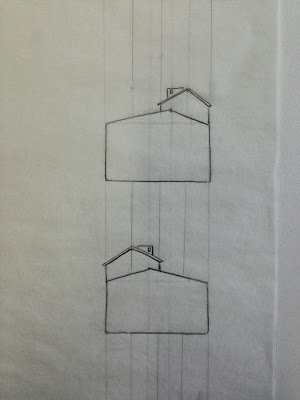We took measurements in groups, doing quick sketches and then we proceeded to do freehand plans, sections and elevations of the building.
I used a scale meter to get the proportions and ratios right. Construction lines are made with a 3H pencil. Then, I did the outline with a 2B pencil, leaving the construction lines underneath.
Getting started with our team drawings. We made little groups of 3 or 4 to take and share measurements, which made everything clearer when the moment came to draw the "more accurate" sketches.
The process of drawing the section. First, construction lines and light pencil marks. Then, going over with 2B (freehand) and adding finer details. Finally, shading the section.
Side elevations of the building.
Front and back elevations of the building
Plans of the top and bottom floors plus the third section.











+18.34.13.png)
+18.34.21.png)
+18.34.30.png)



















